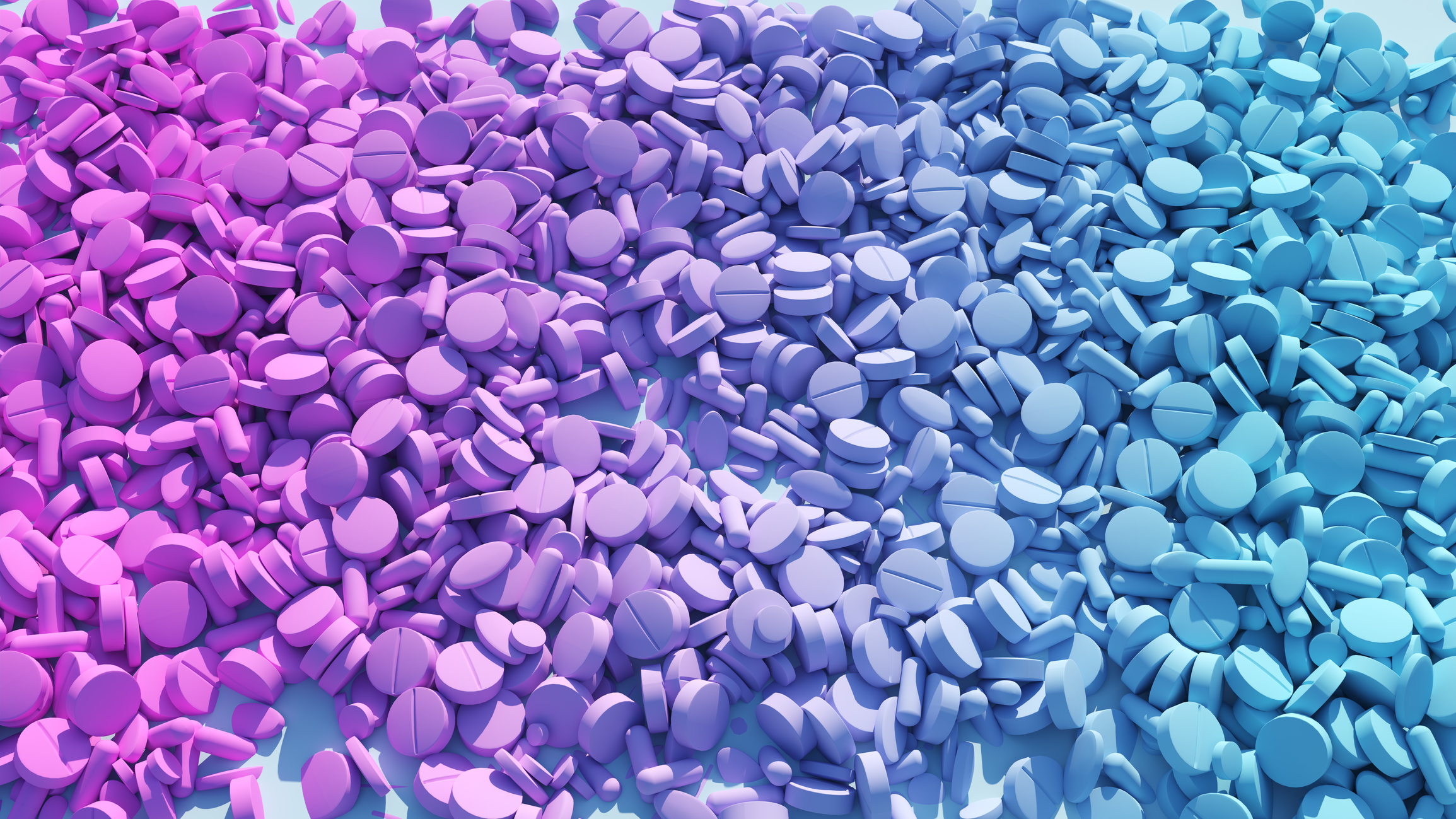Lies my Gemini chatbot tells me.
Double Vision on Testosterone

The trans lobby lies about the harmful effects of steroids on human development.
The testosterone two-step is a dance in which medical advice regarding the risks and effects of testosterone, a habit-forming anabolic steroid, varies according to the reason it is being prescribed. If a patient reports a history of anabolic steroid use or a desire to take anabolic steroids for bodybuilding, he may get a very different discussion of the risks and benefits of the drug than if he wants to grow a beard and redistribute body fat into a male-typical pattern. Yet there is no scientific evidence nor logical reason why having gender dysphoria would alter how this medication is processed by the body.
This represents a denial of informed consent in the name of affirmation. But individuals on the trans assembly line are defined by medicine and psychiatry as being terminally mentally ill and at imminent risk of self-harm. They are constructed to have a sort of gender diabetes that can only be treated with one specific hormone: testosterone. They are told, in contradiction to available literature and common sense, that their female bodies with female genetics and female heart proportions will default to a male risk profile, despite the fact that males who take testosterone for bodybuilding definitely do not have zero risk simply because they’re males taking this drug. They do not default to the profile of males not taking this drug exogenously. The administration of testosterone to mentally ill women represents magical thinking from people who fear the trans lobby and who want to sell habit-forming drugs to vulnerable people, including children, who are rendered lifelong customers of these predatory industries.
For decades, the risks of taking testosterone for a cosmetic effect, meaning at the high doses needed to induce systemic cosmetic changes, were well-known and well-acknowledged by medical science. Testosterone is an anabolic steroid, meaning it is a drug that promotes the growth of muscle, with a high potential for psychological dependence. Therefore it was made a controlled substance due to use by individuals looking to build muscle such as bodybuilders and other athletes.
Transmasculinity, the use of testosterone to cause a female person to resemble a male person, is a new category of steroid abuse. Some of this transmasculinity involves “bottom growth,” an effect on the external female genitalia of female patients, often female minors, that entails a permanent alteration in the size, shape (i.e., deformation), and function, as well as, per social media reports, significant pain because the growth of these tissues is drug-induced and not acting in natural concert with growth of the surrounding area. This disparity often results in compression/compartment syndrome and, in some cases, loss of function due to pressure necrosis and impaired circulation. Genitalia are highly vascular and rich with blood vessels, which allow the structures to swell in response to internal and external stimuli.
Trans men (females) are often sold a procedure called metoidioplasty, which involves “releasing” (cutting apart) the external fascia that creates this compartment, as well as other procedures performed at the same time aimed at producing a miniature approximation of male genitalia in a female.
Boston Children’s Hospital explains,
Although they have different functions, the clitoris and penis are both derived from the same tissue. Metoidioplasty takes advantage of this fact by creating a penis from the clitoris after it has been enlarged through the use of testosterone therapy. Often, a scrotoplasty (surgical creation of a scrotum from the labia majora) is performed at the same time.
Metoidioplasty may also include surgical construction of a glans and lengthening of the urethra. The first option improves the resemblance to a cisgender male’s penis. The second makes it possible for you to urinate while standing up.
This procedure is often done years after girls are started on testosterone. By then, the damage caused by the growth inside of the compartment may be done, resulting in an irreversible loss of sensation and function. Since female genitalia evolved in part to facilitate childbirth, not just for sexual intimacy, this could have negative consequences not just for the patient but any children she has. However, as Boston Children’s Hospital has advertised, “gender-affirming hysterectomy” is available to obviate this problem.
Testosterone is a Schedule III controlled substance. Unlike Schedule I drugs such as marijuana or ecstacy, which “are defined as drugs with no currently accepted medical use and a high potential for abuse,” Schedule III drugs are recognized to have legitimate medical uses, a lower potential for abuse than Schedule I and II drugs, and a moderate to low potential for dependance. An example of another Schedule III drug is ketamine, a dissociative drug that is commonly abused by the party scene for its psychoactive effects. Ketamine is a “battlefield anesthetic,” because it does not suppress the breathing reflex (unlike morphine or other opiates), and therefore it can be dosed in a large quantity for major trauma cases without concern that the pain relief will cause the patient to stop breathing altogether.
Testosterone also has legitimate medical uses in both men and women. It is essential to ovulation and spermatogenesis. Men especially need testosterone in order to have optimal metabolic function. The male pancreas will malfunction without an adequate dose of testosterone, and this is true even for male patients with complete androgen insensitivity syndrome, where the patient lacks functional receptors for the testosterone. This can result in metabolic syndrome and Type 2 diabetes per case reports in peer-reviewed literature.
Testosterone is a controlled substance in part, because it is known to be highly psychoactive. I have seen this effect in close loved ones who were put on testosterone for reasons of gender affirmation, resulting in immediate and profound alteration of their mood, anxiety level, and judgment. It changed them. And this is reported commonly, even as the people reporting it deny that it is psychoactive and deny that this may be the real reason testosterone improved some symptoms of mental illness, especially dysphoria. Testosterone chemically induces euphoria. Trans activists will say that the drug caused them to turn from an introvert into an extrovert, caused them to become attracted to males when previously they had only been attracted to females, and—the reason they say it’s “lifesaving”—had some subjective impact on their preoccupation with suicide.
My girlfriend in college was prescribed testosterone, and it caused her to experience personality changes. She became aggressive and irrational. I could not make her see reason. Her pursuit of gender ideology, acquired through social contagion (beginning with me, I regret to recall), was then fueled by other peers, LGBT organizations, and a gender therapist, as well as writers like trans-identifying man Julia Serano whose book, Whipping Girl, discussed how testosterone interacts with the genome to produce its effects cellular. Serano, a biochemist, concludes that testosterone induces male-pattern gene expression, with the implication being that females on testosterone were metabolically male in some way and therefore ought to be considered legal and medical males. Consequently, my loved one became an activist against sex segregation in medical research.
A significant problem in medicine is that, historically, all the way back to the ancient Greeks, researchers started from the premise that women were a special kind of man who could get pregnant. Because of that ethical factor, and the concern that menstrual cycles would confound the data, research was done on men and then was generalized to women, adjusting for height and weight. This error in medical judgment was rooted in part in the belief that men and women were two versions of the same entity—a human being. This in turn was further rooted in medicine’s desire to account for and accommodate the existence of intersex conditions, now termed with the more modern euphemism, disorders of sexual development (DSDs). Medicine and believers in trans have pointed to DSDs as proof that humans start the same and then diverge. But in point of fact, males and females are all but two separate species within the species of human. Only in reproduction shall the twain meet.
This confusion of male and female, this treatment of females as unusually feminized and non-androgenized males despite known genetic differences and this evolutionary history, has had catastrophic medical consequences for women and girls, as well as for individuals with DSDs, whose treatments were and continue to be frequently guided by the idea that it’s acceptable to try to guess which “gender” (man or woman) the child with the DSD will “pass” as best and surgically correcting him or her accordingly.
(One of my last points of heightened disagreement on this topic with my girlfriend, at the time, regarded clinical trials looking at the efficacy of HIV PrEP (pre-exposure prophylaxis) which is aimed at preventing HIV transmission/infection. The drug tenofovir is excreted unaltered by the kidneys (renal metabolism). The human kidney is sexually dimorphic in terms of both structure and chemistry. The inclusion criteria were limited to males who had sexual relationships with other males. The study authors included trans women, so it was in no sense “trans-exclusive.” However, it excluded females, including the ones who identified as trans-males. That was invalidating to her and to trans women, whom she thought should be excluded in the name of gender. She thought she should be included in the dataset for this study, because she was taking this anabolic steroid called testosterone, and damn the consequences to gay and bisexual male humans trying not to contract a deadly virus.
She did not consider (I suspect due to testosterone-addled judgment combined with medical ignorance) that this research would contribute to medical recommendations such as what dose is needed and how frequently one needs to take this medication, as well as side effect information. Accurate data on drug efficacy is critical, and that means it has to be tested in males and females separately. She and who knows how many others like her—probably not the millions and millions that Matt Walsh claimed, but I loved her enough that one is too many for me—are encouraged to put the medical health and well-being of other people on the back burner in the name of their own personal sense of validation and right of entry into any and all circumstances their gender identity commands. (She truly believed she was a gay man at this time.)
Testosterone is in no sense a benign drug. It’s been proven to induce tumors in female Wistar rats. Wistar rats are a strain that was developed for medical research in 1906, meaning they are inbred lab rats with known genetics. They are very stupid and not at all like wild mice. But the benefit is that scientists can know that the cancer is minimally likely to have been a coincidence due to family history of cancer promoting genes (oncogenes). If rats are injected with either testosterone or a placebo, only the testosterone rats develop tumors. This is the highest standard of scientific proof. I have had trans activists, when presented with this information, tell me “humans aren’t rats,” with some saying outright that our body pattern resemblance is some kind of coincidence and not a product of recent common ancestry.
Testosterone is also known to significantly elevate the risk of stroke and heart attack by increasing the number of red blood cells circulating in the confined spaces of the circulatory system (erythrocytosis). Human females have fundamentally different proportions than males due to various factors, especially the lack of a Y chromosome, which affects bodily proportions independent of testosterone, as can be seen with completely androgen insensitive XY patients who are larger than XX females. Female humans have smaller hearts and smaller vessels. Too many red blood cells becomes a problem more quickly in a female versus a male. Our heart attack symptoms are different for a reason.
Testosterone also impacts the heart in other ways. Testosterone causes muscles to increase in size and shape, and the heart is a muscle. When the heart muscle increases in size abnormally, such as due to drug use, this can produce an enlarged heart (cardiomegaly) which can then affect the capacity of the heart to effectively pump blood. Combined with thicker blood induced by testosterone, the heart has to work that much harder to perfuse the tissues. If the heart muscle cannot effectively pump blood at its resting rate, the resting rate at which the heart pumps will increase to compensate. This increased heart rate has the same effect as exercising any other muscle; in other words, it causes the heart muscle to increase in size, further resulting in a feedback loop. Eventually, the heart is no longer able to compensate due to being enlarged, resulting in heart failure. Trans activists brush this off, insisting that as men, they embrace having the same risks as other men. But scientific literature says that androgenized females have a significantly higher risk of heart complications than both men and non-androgenized women. The trans activists see testosterone as a free lunch when it is actually a free trip to an early grave.
Testosterone is also being given to trans identifying women for the purposes of “lowering their voice.” This is often done without supervision or consultation by a speech pathologist. I have spoken to any number of detransitioners who are devastated by the permanent voice effects they experience and were not aware of my field (speech-language pathology) nor what we can offer them. I graduated from SLP school in 2015, and there was minimal coverage of the effect of the cosmetic use of testosterone on the voice, though we did touch on transgender voice coaching (not to address hormone-induced pathology but to allow a male to mimic a female and vice versa). We also separately addressed the impact of a variety of drugs on structures within the voice. Far from benignly lowering the pitch, we have known from animal studies conducted in the ’70s that sufficiently high doses of testosterone have the capacity to induce irreversible lesions on the vocal cords. Testosterone use has also been linked to the development of laryngeal stenosis, a narrowing of the breathing tube, following intubation, due to the interaction of the hormones, the immune system, and local inflammation from pressure necrosis associated with having a tube pressing on the trachea from the inside.
Testosterone’s impact on the voice is complex. The fundamental change in pitch occurs due to a variety of factors, notably the increase in the size of the muscle called the thyrovocalis, i.e., the true vocal cords. The increase in this muscle is happening underneath the multilayered connective tissue called the lamina propria, which has to flop about rhythmically in order to generate sustained, sonorant voicing. However, when the underlying muscle increases, it can have the effect of canceling the flop factor, and if the muscle grows too big too quickly, it also may create tiny stretch marks on the lamina propria. These stretch marks can be heard, but based on my interviews with detransitioners, they are difficult to see on a standard endoscopy. Stroboscopic evaluation, which creates a more detailed look at the lamina propria, seems not to be considered gender-affirming, so they are having difficulty accessing this diagnostic examination that might give them some answers.
The combination of increased size of underlying muscle and changes to the thickness, stretchiness, and consistency of the connective tissue alters the normal movement of the lamina propria. This is the true cause of what has been termed as transmasc voice disorder or “trans guy voice,” which is characterized by impaired phonation and associated reduction in resonance. Not every female on testosterone will develop this disorder, and it is a multifactorial syndrome that is a function of the patient’s dose and testosterone sensitivity (no genetic testing is typically performed prior to the administration of gender-affirming hormones that might reveal heightened androgen receptor sensitivity, though such tests exist). The ones that do develop trans-masc voice disorder are at risk of other complications such as strain-induced nodules from attempting to compensate for the dysphonia caused by the testosterone. The typical, unguided vocal compensation is to speak more forcefully. These nodules are essentially calluses on the vocal cords. Whether they develop this voice disorder or not, detransitioners have reported persistent vocal pain and difficulty swallowing following cessation of the drug use.
Testosterone impacts the expression of the genes that create collagen fibers, which is what cartilage and other connective tissue types are composed of, generally in the direction of increasing production and turnover of collagen-based tissues. The affected tissues include the small mobile cartilages within the voice such as the arytenoid cartilages that stabilize and otherwise control the action of the vocal folds, allowing for dynamic pitch and volume adjustment during speech. This could have especially negative consequences for an individual who has a defective collagen gene (such as Marfan Syndrome). Based on interviews with various detransitioners and reviewing informed consent documents, the possibility of exacerbating underlying genetic disorders is simply not considered when the choice is made to affirm a child’s preoccupation with being the other sex. Testosterone also has been observed, and replicated by multiple studies, to induce global and structure specific volumetric changes in the brain.
The common gel method of testosterone administration is a serious public health concern, as it has the capacity to cause anyone who touches the person using Testogel, several hours after use (sources vary and it also depends on which part of their body to which it is applied), to get an active dose of testosterone. This is a phenomenon I’ve termed “secondhand trans,” but it has also been associated with men taking this drug for non-gender reasons. One episode’s plot line of the popular medical drama House was even based on this phenomenon, nearly a decade ago. This transfer can happen through clothes, hours after application. Children who have close contact with adults using Testogel have been affected, resulting in abnormal growth and viral news stories. Yet doctors are prescribing it to teen girls and sending them off to school, and teachers are also applying it at home and then coming to work.
No 14-year-old girl could possibly consent to any of these short and long-term effects, which is why parents must consent and have a moral and legal obligation to act in their best medical interests, barring limited religious exemptions. Having been a brilliant and articulate 14-year-old myself, I know now what I did not know then about my normal teenaged limited capacity. These girls don’t yet know what they don’t yet know. I also know how vulnerable I have been at times due to reasons of psychological distress, a form of curable mental illness, especially when I was preoccupied myself with becoming the other sex and had not yet had time to receive treatment. I know that recovery from gender dysphoria without this medical self-sabotage is possible.
For those who say it is not possible, that my recovery means that gender dysphoria is not actually what I was experiencing, then I know it is possible for a person to be fundamentally wrong about whether they have gender dysphoria, even if their care team agrees and even if gender affirming care helps the symptoms. We have a duty to act in the best interests of minors and of people who can be reasonably deemed mentally incompetent or with diminished capacity due to known, severe mental illness such as the individuals who are willing to threaten suicide in order to gain access to controlled substances, which in other circumstances is forthrightly called “drug-seeking behavior,” or simply due to age and a history of early and significant psychological trauma.
A parent who objects to giving this drug to their child for cosmetic reasons is in a nightmare situation where the school, medical providers, and the government can conspire with the child and with the parent’s malicious ex-partner to sabotage the girl’s life over the dutiful, informed parent’s objections. Some parents have even been incarcerated for attempting to protect their child. My state, California, recently became a “sanctuary” state for children seeking care over objections of parents and in spite of court orders. We cannot be setting families up for this nightmare so that a cadre of predatory industries can make a quick buck by marketing their mood-boosting carcinogen to teenagers on their version of television: social media. Big Testosterone is the Big Tobacco of our time. This has to stop.
The American Mind presents a range of perspectives. Views are writers’ own and do not necessarily represent those of The Claremont Institute.
The American Mind is a publication of the Claremont Institute, a non-profit 501(c)(3) organization, dedicated to restoring the principles of the American Founding to their rightful, preeminent authority in our national life. Interested in supporting our work? Gifts to the Claremont Institute are tax-deductible.
The case of Sam Brinton demonstrates why standards aren’t always a bad thing.
Understanding the “trans” phenomenon means recognizing it’s about more than gender.
Wokeness’s war against sex and gender descends to clownish levels.
Give leftist interviewers a rake to step on.
Let's do a little regime change, one red state at a time.






